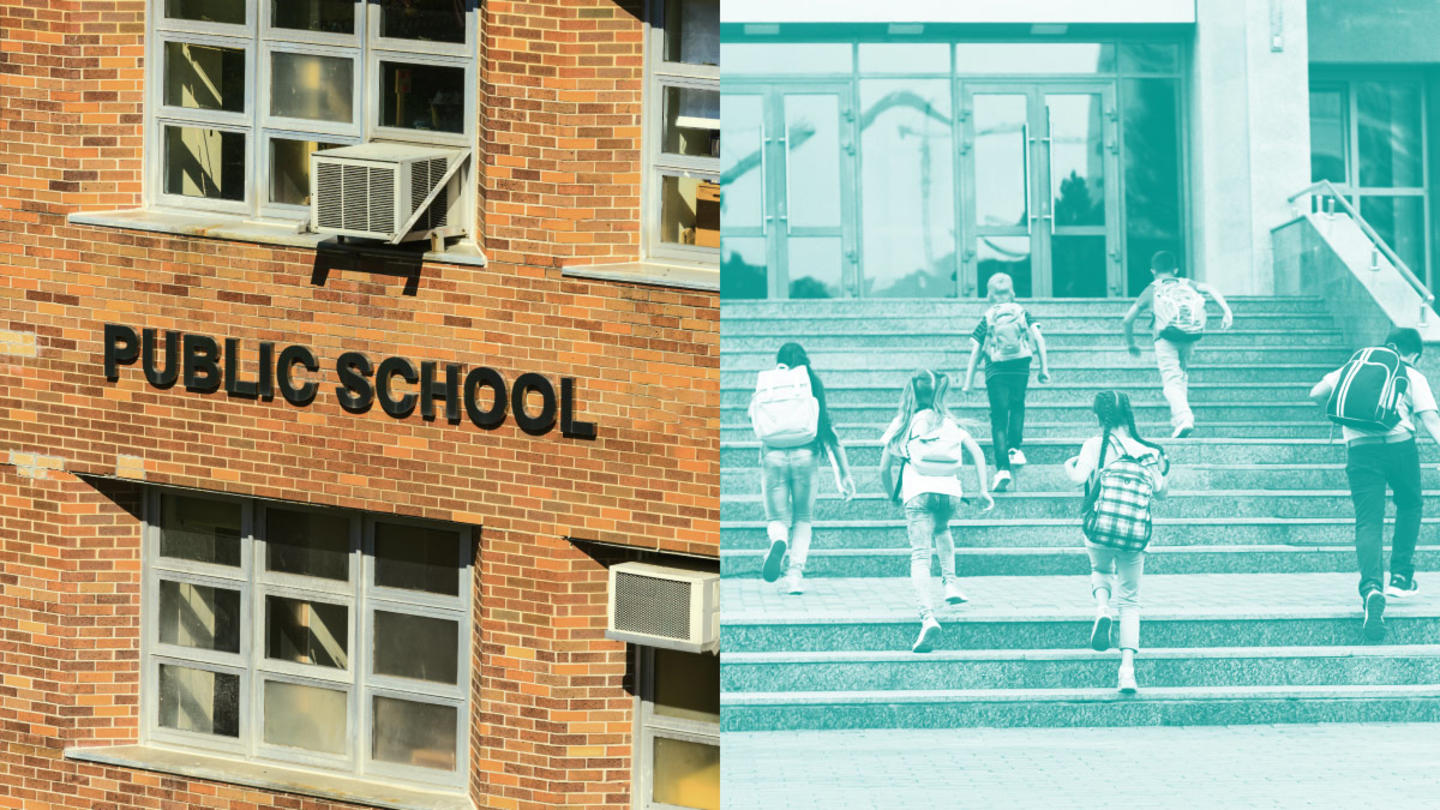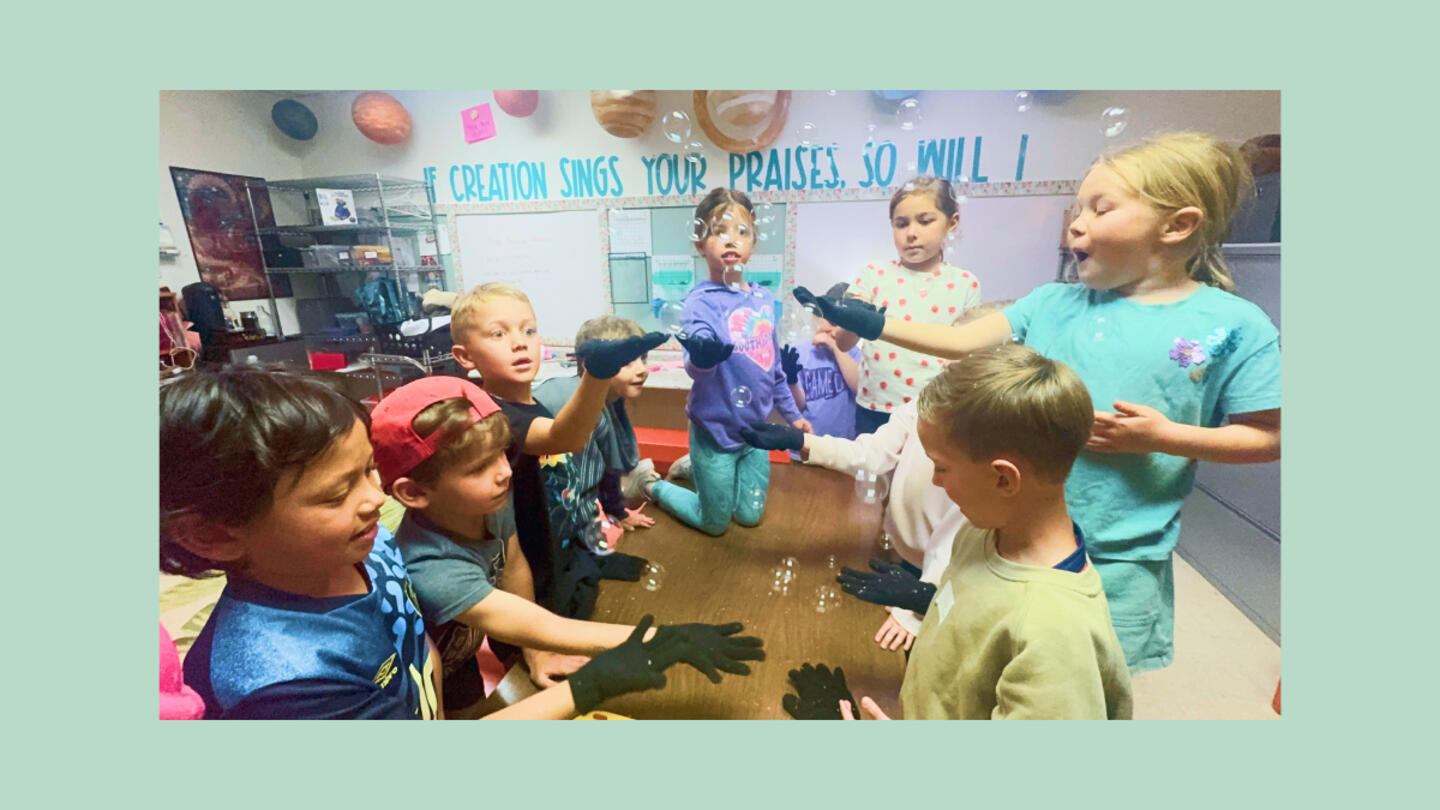Like many families, Stand Together field reporter Justin Toops' children attend public schools. There are six public elementary schools in the close vicinity of their home that would work for their family. But all but one of those schools are closed to Justin's kids.
"Like a lot of parents, where my kids go to school wasn't decided by me," he says.
The majority of states utilize residential assignment policies — school district boundaries and attendance zone lines drawn by politicians and bureaucrats — to mandate where students are eligible to enroll in school. Middle-income and lower-income families often find themselves boxed out of the best, most coveted public schools.
"The public education system is really a huge anomaly in our society, " describes Tim DeRoche, president of Available to All. "We don't allocate any other government service based on where you live. We all go to neighborhood grocery stores. We take our kids to the neighborhood daycare centers. We do all of that without empowering the government to draw exclusionary, discriminatory maps that keep out other people."
As a public watchdog, Available to All works to defend equal access to public schools. DeRoche and his team have exposed abuses that undermine the commonly held belief that all public schools are equally available to all American kids: (1) children denied open enrollment seats in public schools because they have a minor disability, (2) parents put in jail for using someone else's address to get their kids into a high-quality public school, and (3) magnet schools that violate their mission by giving enrollment preferences to the wealthy and the powerful.
But the most pernicious example of exclusionary enrollment policies is residential assignment based on discriminatory maps.
"These lines [on the map] don't understand how your kid is unique," DeRoche says. "Every kid has a unique learning style, has unique needs, and these lines were drawn by a bureaucrat, perhaps decades ago. That person has no understanding of what your kid's needs are today in the here and now."
DeRoche believes that ending residential assignment has the potential to transform our education system. It would open up the best, most coveted public schools to more middle-class and working-class families, and more students would be empowered to reach their full potential.
"This impacts almost every public school in the country," he says. "In many cases, a [child's educational] fate is being determined when they're five years old, based on whether they live on one side of the street or the other side of the street."
Residential school assignment has a shameful history
How did we get here?
Residential assignment policy has its roots in redlining, an early 20th century government practice that categorized certain urban neighborhoods as "hazardous" — a thinly veiled way to identify these areas as having high populations of African Americans and immigrants. Other areas were marked as "desirable," and residents of these areas were given privileged access to mortgages and housing assistance from the federal government.
DeRoche's work has shown that the attendance zones of elite public schools often mirror the racist redlining maps that were created nearly a century ago. As a result, these coveted public schools still exclude children of color, immigrants, and working-class families, even those who live just blocks from the school.
Since families are locked into certain schools based on their address, their schools often don't meet the specific educational and social needs of their children. Students aren't given the opportunity to live up to their full potential, and entire communities can suffer as a result.
For parents, choosing between their assigned school and their children's futures can have dire consequences
What happens to parents who try to fight the system?
"It's an unfair game," DeRoche says. "I think there are losers up and down the economic spectrum. Parents and families are forced to make these awful decisions with life-changing stakes."
Within the residential assignment system, parents are forced to choose between adhering to the law and prioritizing what's best for their children's future. DeRoche points out that many parents use a borrowed address to enroll their children in better schools. And a small minority of these parents face extremely harsh criminal penalties.
Kelley Williams-Bolar is one parent who went to prison simply for wanting a better future for her children. She worked in the public school system in Akron, Ohio, and didn't like what she saw when her daughters started attending the schools.
"No one was learning," remembers Williams-Bolar. "It was taking away from the kids who really wanted to learn something."
So she did what any good parent would do. She looked for a way to get her daughters into a better situation. Her dad lived just 10 minutes away in a district with much better schools. Kelley used his address to enroll her daughters into a school where they thrived.
But the fallout was steep. "The district hired a private eye who followed me around for two weeks," says Williams-Bolar. Her kids were forced to leave the school and go back to the failing schools in Akron.
Eighteen months later, the school district filed charges against Williams-Bolar. She was given two five-year sentences in prison, of which the judge suspended all but 10 days.
"Her dad is a property owner there. Her dad's a taxpayer in that district," DeRoche says. "Kelley's trying to make the right decision for her daughters, and she's put in jail for it."
Williams-Bolar was eventually granted clemency by the governor, thanks to a huge outpouring of public outrage. But DeRoche points out that public opinion alone doesn't always change the underlying laws that continue to force parents into heart-wrenching positions.
"The laws that allowed that district to do that are still in place," he says.
True open enrollment would ensure that the best public schools are available to all kids
If parents want options to ensure their children get the best education, what alternatives do they have?
"In the near term I think we just want to make the lines less important," DeRoche says. "We're very big fans of open enrollment."
Open enrollment allows students to apply to public schools outside the ones their zoning allows them. DeRoche says that states have the ability to ensure that those schools consider students equally for admittance, regardless of their address.
Critics argue that school districts need to control access to individual schools for planning purposes and that opening up coveted public schools might lead to affluent families leaving the system, since they would no longer have exclusive access to these coveted schools.
However, DeRoche says that this fear is unfounded. Open enrollment has the potential to restore the public's faith in public schools by ensuring that all children have an equal opportunity to attend the most coveted public schools and by empowering parents to seek out the public school that is the right fit for their child.
"I believe that getting rid of the lines might rejuvenate the whole system," DeRoche says.
Opening up the most coveted public schools could restore the promise of public education
If open enrollment were allowed in Toops' state, his children would be allowed to attend a school they love, only two miles down the road from home. But that doesn't mean the difficulties of our K12 education system would disappear overnight.
"Open enrollment isn't going to fix everything," DeRoche says. "It's not a utopian vision. But what it is is a vision of the public school system that is truly available to all, that's open to all."
Open enrollment is currently being tested in states from Oklahoma to Wisconsin to Arizona to Idaho. But that doesn't mean that signing off on open enrollment actually frees up families to cross school lines. States must ensure that the laws are free of loopholes that allow schools or districts to turn children away for arbitrary or discriminatory reasons.
Ultimately, if implemented well, open enrollment could be a powerful pathway to provide students with an education system that helps them identify their unique gifts and pursue the future they want for themselves.
"We're hoping to spark a movement to hold public schools to the highest standards of openness," DeRoche says. "I have a tremendous amount of sympathy for parents who play this game. Let's not just assume that the local school is the right fit for my child. Only you know what's best for your child."
Available to All is supported by Stand Together Trust, which provides funding and strategic capabilities to innovators, scholars, and social entrepreneurs to develop new and better ways to tackle America's biggest problems.
Learn more about Stand Together's education efforts, and explore ways you can partner with us.



